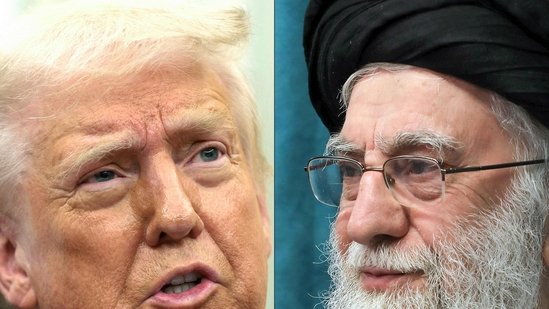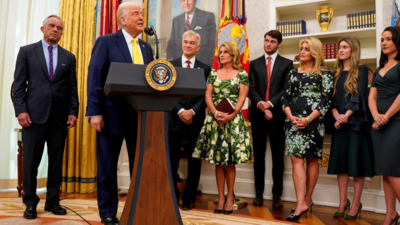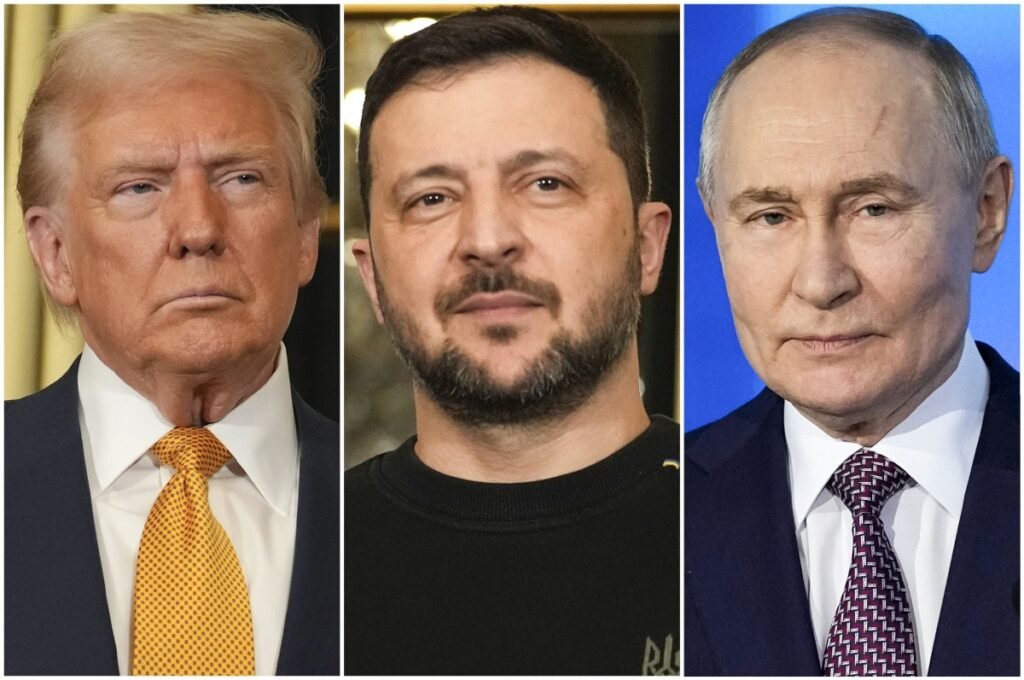Carmakers have spent years promising soon their vehicles will be able to drive autonomously, without human intervention.
That will all be thanks to a complex system of sensors, cameras and artificial intelligence.
So far, though, that has not yet happened, with the technical hurdles seemingly pretty high.
But expect movement soon when it comes to robot cars. Mercedes-Benz aims to provide autonomous driving up to 95 km/h corresponding to Level 3 in some of its vehicles in 2025.
The carmaker plans a 2++ system for urban driving in China mid-year, while Nissan aims to offer automated driving from 2027.
So what does it all mean? A guide to some key questions about autonomous driving and the different levels under consideration.
What is autonomous driving?
The automotive industry divides automated driving into five levels, calling them assisted (L1), semi-automated (L2), highly automated (L3), fully automated (L4) and autonomous (L5).
Only from level 2 can a car steer, brake and accelerate independently under certain conditions, such as with adaptive cruise control or lane change assistance. However, the driver must have their hands on the steering wheel and retains responsibility.
Only at level 3 does the vehicle take over these tasks under defined conditions. The driver can then focus on secondary activities such as reading, watching videos or looking at their mobile phone. However, the driver must take control of the car in critical situations and when the vehicle requires it.
At level 4, the vehicle takes over driving responsibility and the driver becomes a passenger. However, if they wish, they can take the wheel and drive themselves.
In Level 5 for autonomous vehicles, the car handles all driving tasks itself at all times – the vehicle no longer needs a steering wheel or pedals.
“Level 3 is a completely different world. At level 3, the responsibility lies with the car. It first has to tell the driver to take over,” says Markus Lienkamp, Professor of Automotive Engineering at the Technical University of Munich (TUM). This happens within four to eight seconds. “The vehicle must recognise that it can no longer drive on its own – and then maintain a safe state for up to eight seconds. These are highly complex tasks,” says Lienkamp.
What requirements do cars need to be able to drive automatically?
For a car to be allowed to drive in a highly automated manner in accordance with Level 3, it must be able to complete certain driving tasks independently in accordance with international regulations (UN R3157).
So far, only Mercedes-Benz can do this on motorways up to 60 km/h.
BMW is offering a similar system with the Personal Pilot L3 for the 7 Series as of March 2025. No manufacturer has yet approved it for use outside motorways, for example in cities.
What are the problems with automated driving?
The challenge with automated driving is that the systems always have to work 100% of the time – 99% is not good enough. The technical complexity is immense – more than 40 assistants are currently working with cameras, radar and lidar in a level 2 system like the one from Mercedes-Benz.
Highly automated cars require monitoring systems such as cameras, lidar, radar and ultrasound. They also need highly accurate maps and centimetre-precise positioning via satellite supports the robotic vehicles.
The step from level 2 to level 3 is huge. For safety reasons, systems such as brakes, steering and electronics must be specially designed in a level 3 vehicle, says Taner Kandemir, Project Manager Autonomous Driving at Mercedes-Benz. Manufacturers have to ensure that if one component fails, the second can take over.
“If the automatic steering control fails at level 2, the pilot can take over. At level 3, there is not enough time for this, the car then has to access a safety system,” says Lienkamp.
Where does automated driving work?
So far, automated driving only works on approved stretches of motorway without roadworks, on the far right-hand lane and only until nightfall in Germany and the US states of Nevada and California. It is not authorized on country roads and in cities in Germany. From a technical point of view, a level 2++ system is possible in Germany, but is not permitted to be used.
An urban system is currently being trialled in China, but vehicles still brake somewhat abruptly. It should be available to order in China during the year. “In the future, we will also be travelling automatically in urban areas,” says Kandemir. “But the environment is very complex, which is why we are currently continuing to gather experience with development projects in China.”
How does autonomous driving feel?
Before the driver can relax behind the wheel, there are a few things to consider. Mercedes’ Drive Pilot assistant will offer highly automated driving on motorways, probably from 2025, up to 95 km/h in the right-hand lane and up to 60 km/h in the middle lane.
But the system will not work when changing lanes, in roadworks or tunnels, or in poor weather conditions or below 4 degrees Celsius. A vehicle must be travelling in front of the driver – and not faster than 95 km/h. The driver can then activate the system by pressing a button at the top of the steering wheel.
A message appears on the display indicating that the car is taking over the journey, while the two buttons on the steering wheel simultaneously signal that the system is ready. If the buttons light up permanently, the driver can then focus on other tasks – though only as long as the system does not sound the alarm. Then the driver must deactivate the system within a few seconds using the steering wheel button and take over control.
When will we be driving around automatically in cities?
It depends. In Germany, automated driving already works on motorways today, but here, we still have a few years to wait on country roads and in cities.
Industry experts expect this to be happening by the end of the decade. From a technical point of view, assisted driving such as with a level 2++ system is also possible in Germany, but has not yet been approved.
But progress is also planned on motorways. “Our long-term goal by the end of the decade is to reach the recommended speed of 130 km/h on motorways,” says Kandemir. The maximum permitted speed for highly automated driving is also 130 km/h.
Lienkamp sees an advantage for level 3 systems, especially on motorways where the route is highly predictable. But when it comes to cities, which typically have a complex environment and difficult situations, level 3 vehicles are of little benefit, in his view.
“Then it’s better to use a level 4 vehicle. These robot taxis drive autonomously to the desired location and can be used commercially,” says Lienkamp. TUM has been researching a level 4 vehicle for several years. At the end of September, a converted VW bus with open-source technology drove autonomously through Munich’s city centre, recognising traffic lights and pedestrians and adhering to traffic regulations.
When dangerous situations occurred, the developers took over of the car by remote control, with a safety driver sitting behind the wheel during the journey. “We wanted to show that we can also build level 4 robot cars in Germany and give technical development a boost,” says Lienkamp.
What are autonomous cars going to cost?
The technology for automated cars is still very expensive and costs thousands of dollars. BMW charges €6,000 or $6,500 for its motorway assistant, Mercedes-Benz at least €5,950. So automated driving will only be worthwhile for private cars in the next few years for luxury vehicles or in the commercial sector. If the technology can replace a driver there, it could be economical under certain circumstances.

Urban test: This prototype based on a Nissan Leaf has 14 cameras, ten radar and six lidar sensors to navigate its way through complex urban environments. Toru Hanai/Nissan/dpa-tmn


















